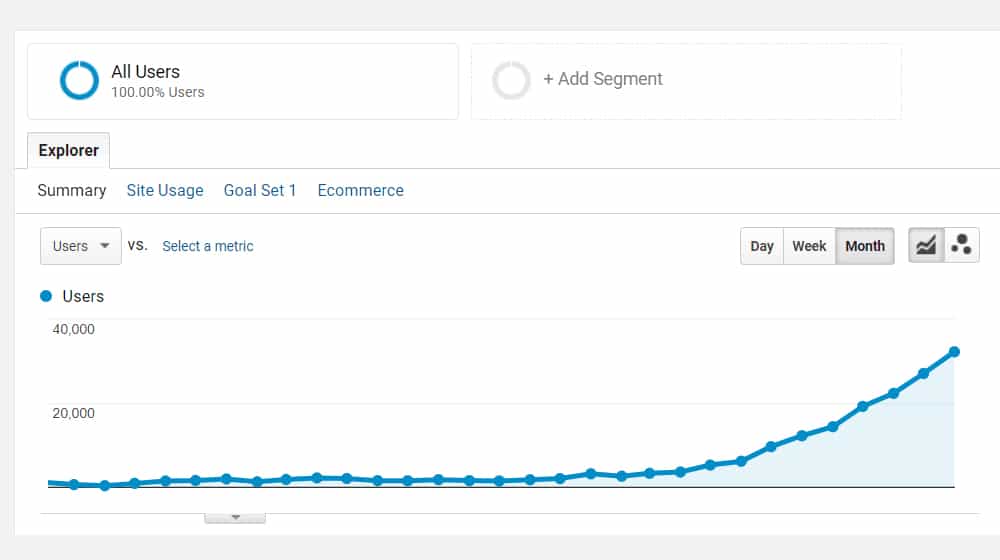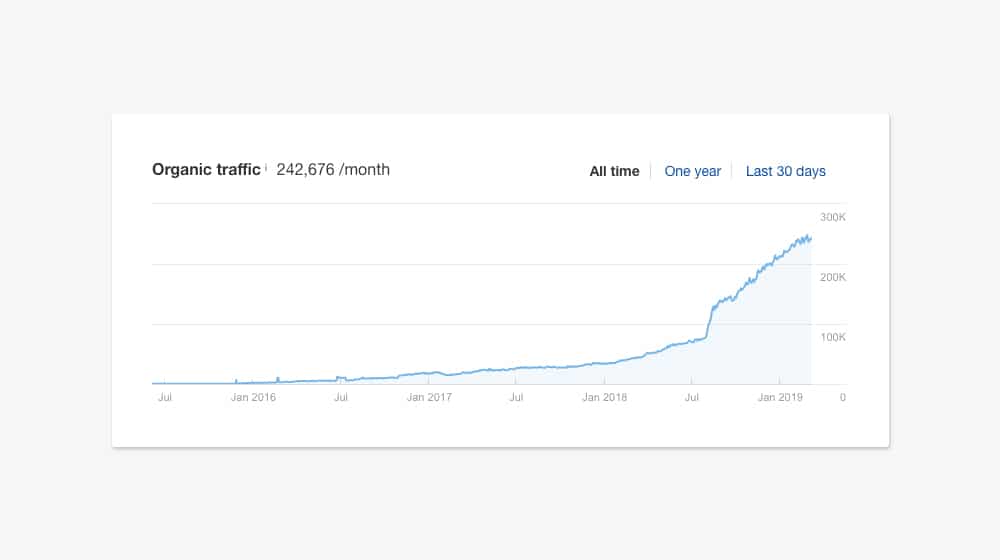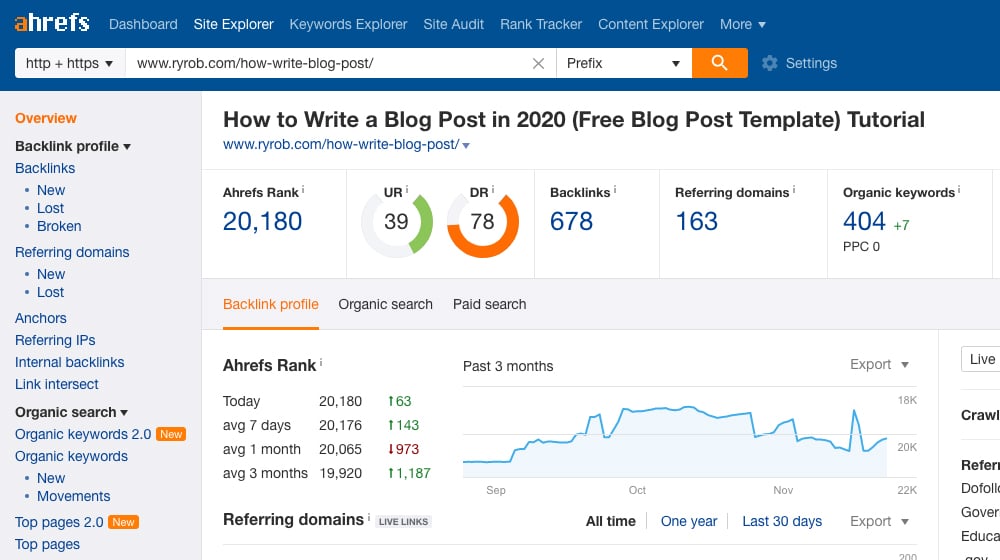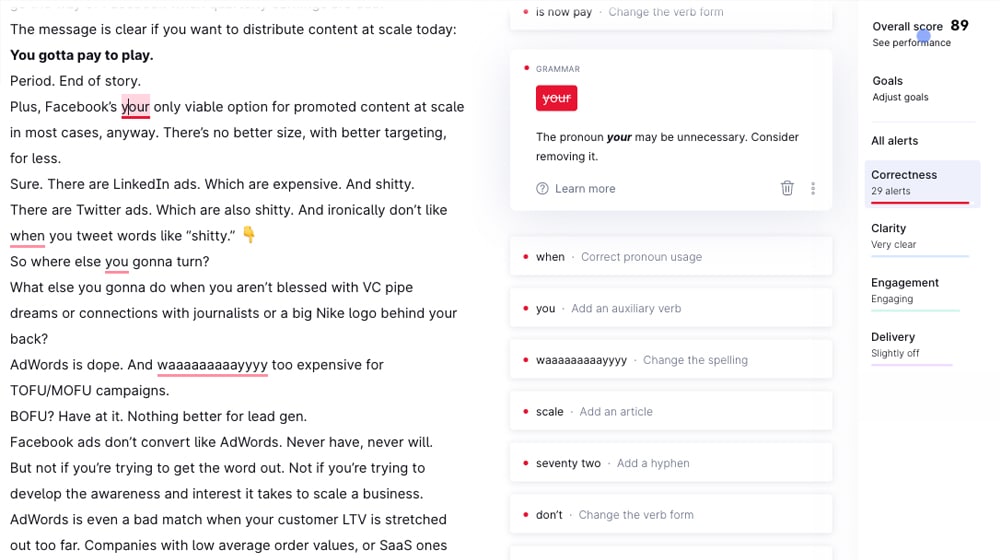Guide to Blog KPIs: How to Track the Metrics That Matter

How often do you find yourself looking at your Google Analytics tab and growing increasingly frustrated at how little value you're getting out of it? How often do you look at sales numbers or web traffic and realize there's no frame of reference, no comparison, so you can't see whether those numbers are impressive or just fluff?
Blog KPIs are surprisingly difficult. A lot of blog owners I've talked to only track a few basics, like web traffic and sales. Even some of the more advanced marketers still only track a few relatively basic metrics, like inbound links. It's a good start, yes, but what is it telling you? And more importantly, what is this data not telling you?
Bloggers also make one major mistake. Even experienced bloggers can make this mistake. That mistake is not waiting long enough to gather meaningful numbers.
When you start a new blog, it takes a while for that blog to gain traction. It can take months or even years before a blog "starts working". During that time, your blog KPIs can look abysmal, and they can look exceptional, and without context, it's hard to tell what the truth is.
Four Things Most Bloggers Get Wrong
The primary focus of this article is on the key performance indicators that give you the real truth about your blog's performance. Before we can get to those, though, we need to build some context. So here are four mistakes that most bloggers – including myself, on occasion – get wrong.
1. Forgetting That Blog Posts Take Time to Grow
Blog posts – at least the good ones, the long-form content that the best blogs are producing these days – are like plants. You can't put seeds in the ground, water them, and expect to harvest vegetables in a week. Neither can you publish a blog post, post it on social media, and expect to draw in sales.
Blog posts take time to reach maturity.
You can accelerate this a little with social media, outreach, link building, and other promotional efforts. That's like adding fertilizer to the water you're pouring on your seeds. It can help them sprout a little faster, but fertilizer is more about keeping the plant healthy and growing it larger over time, not about accelerating its maturity. This is not too different from blogging - it can take a while to build your foundation and for your blog to reach peak maturity.

You can nurture a blog post to keep it growing after this point. My go-to example is the Backlinko guide to search ranking factors. That guide has grown and built upon itself for years and is continuing to be an excellent resource for both the entire industry and for Backlinko itself.
Imagine instead, if they had published that post and then left it alone. After a few months, it would pick up traction and get a bunch of links. After a year, people are still probably linking to it and referencing it, but with the caveat that it might not reflect the most recent Google changes. After three or four years, the peak is behind it, and other people will have taken over the niche by producing better versions of it with more updated content.
The mistake here is that many bloggers simply try to measure the success of a blog post much too soon. Measuring the KPIs of a post and trying to estimate its ROI before it has reached maturity simply means that you'll end up with disappointing numbers.
2. Forgetting that Blog Post Value Compounds
Content like the aforementioned Backlinko guide continually grows in value. More importantly, it adds value to the entire domain. On a technical level, Google recognizes that this domain has a ton of links to valuable content, and promotes everything on the site more often and to higher levels. On an audience level, people recognize that Backlinko is the site producing that content, and that means their other content is probably pretty good too.

You can't measure one month of KPIs for a blog post and treat that as the full value of the post. You can't measure your data over three months, six months, or even 12 months and call that the full value of the post either. Evergreen content in particular is evergreen. It's there for as long as it's relevant.
Think less about how much value this post is bringing you in a month, and more about how much compounding value that post brings your company over the coming years.
3. Forgetting the Intangible Value
I already mentioned this, but you might not have noticed. Part of the value of a blog – in fact, a lot of the value of a blog – isn't about the traffic, the sales, or the leads it generates.
As you publish content, people see it. As you publish content, people find it valuable and link to it. As you publish content, people start to recognize your brand and attribute value to you because of past content. As you publish content, you establish yourself as more and more of an authority, someone who knows what they're talking about, and someone whose advice can be trusted.

That value is extremely difficult to measure as a KPI, and yet it's one of the most important elements of a blog.
4. Being Impatient
Every single blog post you publish is an advertisement for your brand. Every post has to have its own purpose, its own target audience. When creating a post, you need to identify what stage of the user you're trying to reach, how you're trying to reach them, and what you want them to do next.
This means that some of the blog posts that you publish aren't going to have a real return on investment at all. At least, not one that you can easily track.
A blog post aimed at getting readers who have never visited your blog before to find you for the first time is virtually never going to result in sales. If you look at it purely from a sales KPI perspective, that post is a failure.

But, when you look at it from a broader perspective, you can see what really happens. Users find your blog through that post. Weeks later, they find other posts by your brand, on topics they care about. They start to associate your brand with that content, and with the value that they get out of it. Weeks or months later, they may finally be primed to buy what you have to sell, and who do they think of? They think of you, the brand that has provided them with so much value over the weeks and months.
We create blog content that converts - not just for ourselves, but for our clients, too.
We pick blog topics like hedge funds pick stocks. Then, we create articles that are 10x better to earn the top spot.
Content marketing has two ingredients - content and marketing. We've earned our black belts in both.
That's the difficulty of measuring KPIs for something as interconnected and flexible as blogging.
Five KPIs You Should Measure for Real Insight
Now let's dig into the real reason you're all here; the KPI advice I have to give. I track a lot of information for my clients, and I can prove that my blogging efforts have helped them. You can track the same information for yourself, to recognize what your own efforts are doing for you.
1. Traffic
Alright, yes, I know. Up at the top, I mentioned tracking traffic as a newbie metric. So why am I listing it here as one of the metrics that really matter? Because I'm not just tracking traffic, I'm contextualizing traffic. It's not just about the number of hits you get, the number of page views, or the number of sessions - it's about how that information can be put into context and made to matter.

1. Traffic of a given type. Consider traffic volume stemming from particular groups and types of people. I mentioned above that when you create content, that content needs to target specific kinds of users at specific stages in your user journey. Keep notes, and categorize your posts by those attributes. This allows you to see traffic per type of content. Content aimed at getting new users with low pageviews means it's not working, whereas with high pageviews it's working well. Each type of content filters people deeper in your overall funnel, and you can measure your audience in particular segments of your content.
2. Traffic from different sources. Measuring traffic as it comes from varying sources allows you to identify which specific kinds of marketing efforts are working, and which aren't. At the most basic level, you can see things like "Facebook is referring a lot of traffic to us" and "Twitter isn't working very well."
On a deeper level, you can combine this with the content categorization and see which of your traffic streams work best for gathering which kinds of users. That's useful and actionable information.
3. Traffic growth over time. Blogging is very much a "slow and steady" kind of technique in marketing. Measuring traffic as a whole from a bird's eye view allows you to see the long, steady growth of traffic over time. Ignore spikes and surges and concentrate on the averages of growth on a month to month and year to year basis.
2. Links
Again, tracking links on its own isn't a very useful metric. You need to track links in a way that associates particular kinds of value to those links.
The key here is to perform a link audit. This allows you to categorize your links by source and quality. Not all links are created equal, after all. It's trivially easy to build links from social media and from low-quality blogs, but it's a lot harder to get good links from high-quality sites. Even then, links from high-quality sites are only valuable to you if they're relevant in context.

A link audit is a one-time thing, but you should keep on top of identifying links and monitoring where they come from, where on the page they're posted, what context they use, and what value they bring. Again, you can then combine this with other KPIs for more insightful information, such as which links bring in the most engaged traffic.
3. Sales
Raw sales numbers don't tell you anything. A company that closes 100 deals could make much less than a company that closes only 5 deals if those 5 are worth much more. Recurring sales are almost always better than one-time sales.

High-value sales are better than low-value sales. You can also look into specifics about your sales, such as:
- What traffic streams did those sales come from?
- What audience segments are buying?
- Which forms of traffic are the highest value sales?
Contextualize your KPIs.
4. Engagement
Traffic doesn't matter if it's all just bouncing. You need engagement from your users. Engagement comes in many forms, some of which are obvious and some are not.

Consider elements such as:
- Blog comments. Comments are great for SEO and for building brand awareness and engagement with individual users.
- Social shares. Shares in and of themselves are valueless, but they can build awareness and can bring in traffic that isn't.
- Time spent on site. The longer a user spends on your site, the more likely they are to be engaged and interested in your brand, and the better your content was targeted at reaching them. Strive to replicate this.
- Lead generation rates. Which channels are attracting the most leads? Which traffic forms bring in the best leads? Where do those leads go?
"Engagement" is often used as a shorthand just to talk about user actions, but you have to remember the less tangible definition as well; how interested and aware of you your users are.
5. Quality
Measuring the quality of your blog content is a different sort of KPI, and it's sort of reflected by the other KPIs. Low-quality content isn't going to have good, engaged traffic or sales numbers. How do you measure quality?

Content quality can be estimated through a checklist of positive and negative factors. Give your content positive points for longer word counts, use of formatting and subheadings, logical flow, the traffic it brings in, the ranking it gets in relevant Google searches, and so on. Conversely, subtract points for negative aspects like high bounce rates, duplicate or copied content, grammar and spelling issues, and so on.
Data is tricky. You can spend your life accumulating a wealth of data, but if you don't know how to put that data into context, it's not worth having. Look beyond the hard numbers, and figure out what they mean to you.






February 15, 2022 at 12:04 am
Context is definitely vital in putting data into perspective. Without context, all this data is essentially meaningless.
February 21, 2022 at 1:39 pm
Hey Tracy!
I agree. For example, achieving traffic and rankings without conversions doesn't help an eCommerce store all that much.
Context is difficult to achieve sometimes, too.
Historical performance, predicting future growth, patience - growing a blog takes years, and it's hard to measure the ROI of a blog. Assuming you're doing everything right (which most blogs aren't doing), it can take years for a blog to hit its stride. Compound growth is hard to predict and foresee, which is why so many bloggers quit before they start performing.
March 13, 2022 at 5:56 pm
Among the 5 KPIs you listed, I think quality is the one that's hardest to keep track of. I find it hard to be objective
March 15, 2022 at 6:48 pm
Hey Ritchie!
You hit the nail on the head. It's super subjective - topic relevance, competitive research, word count, images, formatting, the amount of "fluff" in the article, screenshots, highlighting - all of these things make a massive difference.
Even if an article looks and reads well at first glance, it could be veering off-topic, switching from first person to third person, or just be recycling what every other post on the subject is talking about. It's much harder to spot these issues and improve them, especially when they're grammatically perfect and are not duplicate content. There's not a tool that exists (yet) that can spot or recommend improvements for many of these things.
September 18, 2022 at 3:04 pm
I feel like we won't have a tool like that anytime soon but that would be so useful!